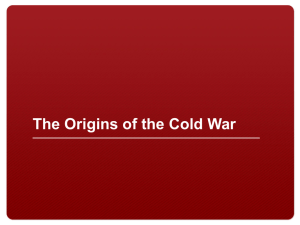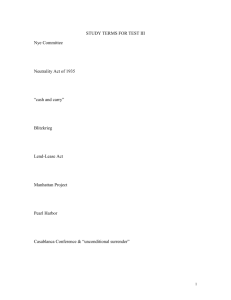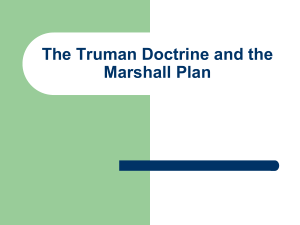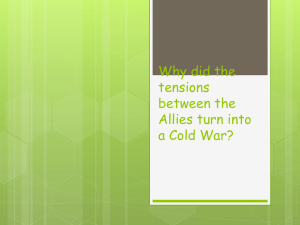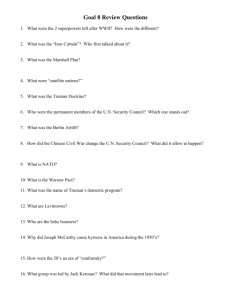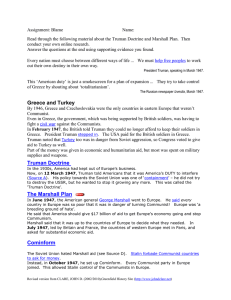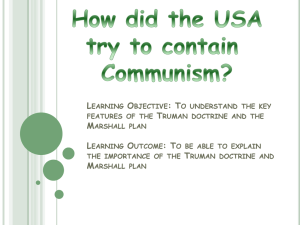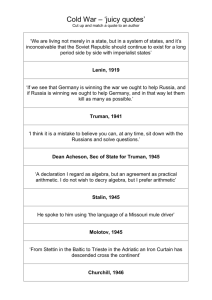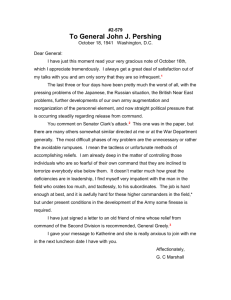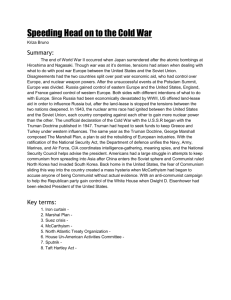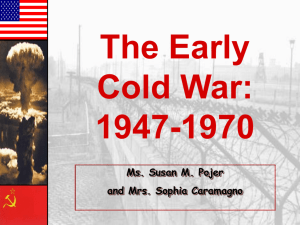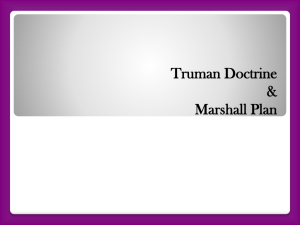The Truman Doctrine and the Marshall Plan
advertisement
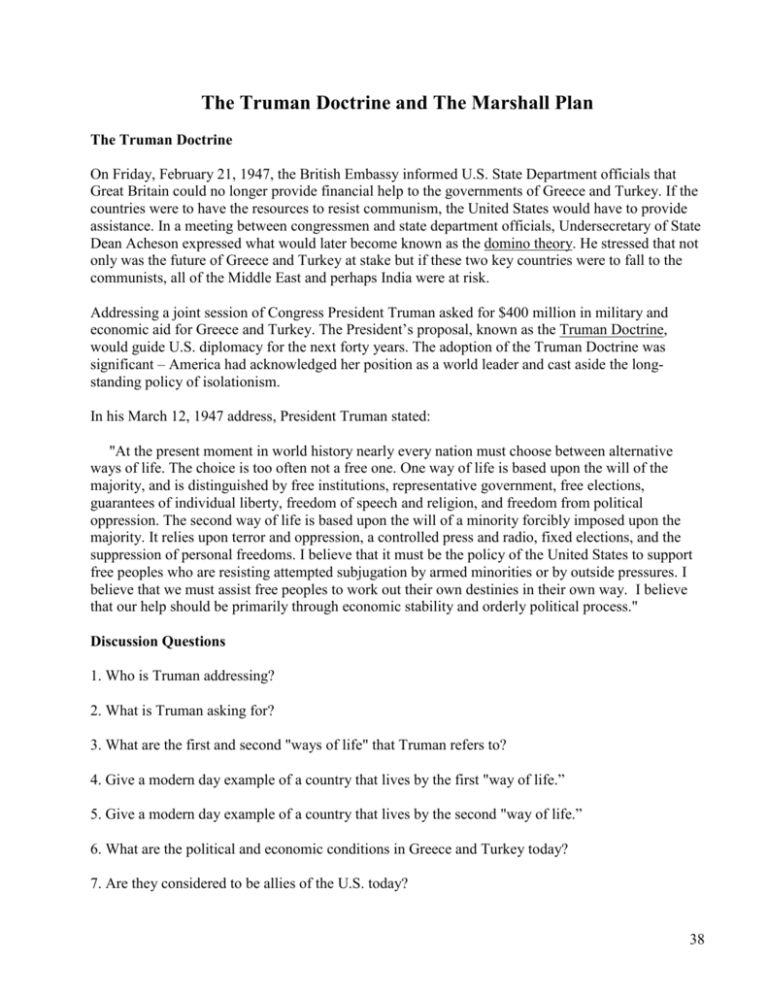
The Truman Doctrine and The Marshall Plan The Truman Doctrine On Friday, February 21, 1947, the British Embassy informed U.S. State Department officials that Great Britain could no longer provide financial help to the governments of Greece and Turkey. If the countries were to have the resources to resist communism, the United States would have to provide assistance. In a meeting between congressmen and state department officials, Undersecretary of State Dean Acheson expressed what would later become known as the domino theory. He stressed that not only was the future of Greece and Turkey at stake but if these two key countries were to fall to the communists, all of the Middle East and perhaps India were at risk. Addressing a joint session of Congress President Truman asked for $400 million in military and economic aid for Greece and Turkey. The President’s proposal, known as the Truman Doctrine, would guide U.S. diplomacy for the next forty years. The adoption of the Truman Doctrine was significant – America had acknowledged her position as a world leader and cast aside the longstanding policy of isolationism. In his March 12, 1947 address, President Truman stated: "At the present moment in world history nearly every nation must choose between alternative ways of life. The choice is too often not a free one. One way of life is based upon the will of the majority, and is distinguished by free institutions, representative government, free elections, guarantees of individual liberty, freedom of speech and religion, and freedom from political oppression. The second way of life is based upon the will of a minority forcibly imposed upon the majority. It relies upon terror and oppression, a controlled press and radio, fixed elections, and the suppression of personal freedoms. I believe that it must be the policy of the United States to support free peoples who are resisting attempted subjugation by armed minorities or by outside pressures. I believe that we must assist free peoples to work out their own destinies in their own way. I believe that our help should be primarily through economic stability and orderly political process." Discussion Questions 1. Who is Truman addressing? 2. What is Truman asking for? 3. What are the first and second "ways of life" that Truman refers to? 4. Give a modern day example of a country that lives by the first "way of life.” 5. Give a modern day example of a country that lives by the second "way of life.” 6. What are the political and economic conditions in Greece and Turkey today? 7. Are they considered to be allies of the U.S. today? 38 The Marshall Plan In an address at Harvard University on June 5, 1947, Secretary of State, George C. Marshall, articulated the general principles of the Marshall Plan. The European Recovery Program, as it was officially known, provided aid to war-torn Europe. Between 1948 and 1951, 16 nations received more than thirteen billion dollars to use for the improvement of agricultural and industrial production, and to rebuild housing, medical, and transportation facilities. --Extract from "Design for Reconstruction" proposed address for Secretary Marshall June, 1947, drafted May 20, 1947. "What will happen if we do not provide adequate funds and commodities for subsistence and reconstruction abroad? This, I think, is hardly questionable: what if adequate help from the United States is not forthcoming, many of our allies in the late war ... will be obliged in the months to come to cease imports of food and reconstruction material. Should this happen, human want, economic collapse, political crisis, collapse of democratic institutions, growth of extremism, and perhaps loss of independence would in many countries quickly follow. Our hopes for peace and prosperity would quickly vanish. We would live in unprecedented isolation. We would live in growing poverty. We would live in growing fear." Discussion Questions 1. How much aid was given through the Marshall Plan? 2. Who received the money and what was the money used for? 3. What reasons are given for providing this financial aid? 4. What would happen if the aid was not given? 5. Look at all the reasons given for providing aid. Which reason do you think was the most important to the United States government at that time and why? 6. To what extent did the Marshall Plan affect the Cold War? 7. How did the Marshall Plan mark a change in American foreign policy in the 20th century? The Truman Doctrine and the Marshall Plan: Compared. On the Venn Diagram that is attached, list the major points of both the Truman Doctrine and the Marshall Plan under the appropriate heading. Where the two circles intersect, list (briefly) how they were similar. 39 40
